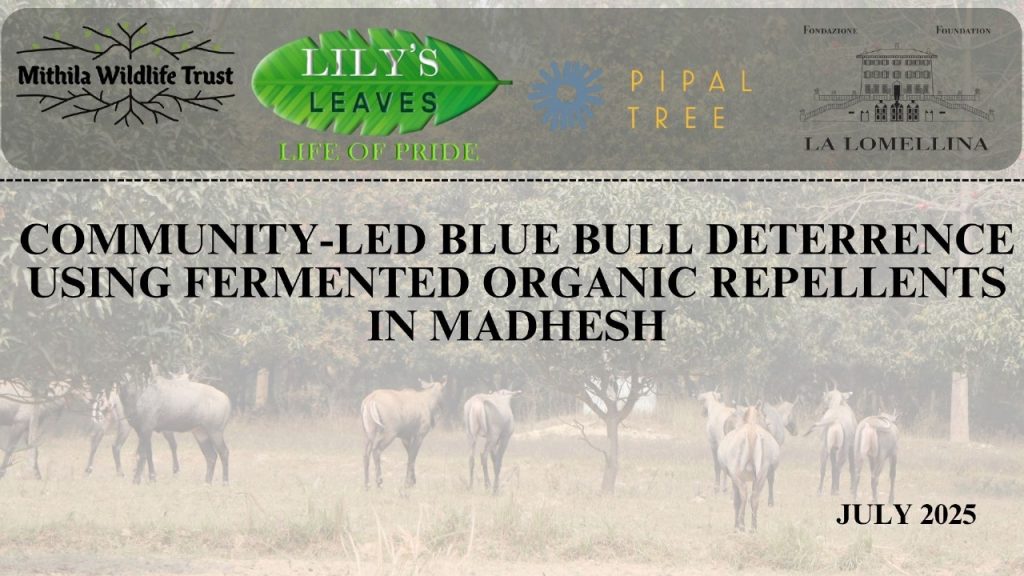In the Madhesh region, an effort has been made to study how to control nilgai (blue bull) by producing odor from decomposing organic waste materials discarded by the community.
As water sources and underground water levels are gradually decreasing, farmers in Madhesh are facing another serious challenge—crop damage caused by wild animals such as nilgai, wild boars, and monkeys. If efforts are not made to reduce crop damage caused by these animals, it will be nearly impossible to grow grains in the Madhesh region within the next few decades.
Since almost every farmer is affected, we have been working for a long time on a solution that would not add financial burden and would instead use locally available, discarded plants and other organic materials to produce an odor-based natural repellent for nilgai. We believed this could provide at least some relief.
As part of this ongoing effort, under the leadership of Sumit Jha—a resident of Siraha district, who studied agricultural science at Tamil Nadu Agricultural University and is now affiliated with Mithila Wildlife Trust—we prepared three types of organic repellents and conducted a six-month field trial. The repellents were sprayed in 12 different farms across 5 municipalities of Dhanusha district.
The repellents were made mainly from garlic, fish waste, buttermilk, asuro (Justicia adhatoda), nirgundi (Vitex negundo), akoun (Calotropis), bakain (Melia azedarach), dhatura (Datura), bangerera, and cow dung.
On average, we observed that the nilgai did not damage the crops in these fields for 12 to 28 days, depending on the repellent used. The selected farms were those where nilgai typically entered either daily or every 2–3 days. The test was closely monitored using automated camera traps to photograph every animal entering the fields, as well as 12 active farmers who directly observed the results.
We are in the process of compiling all our findings into a final report, which will be followed by a press conference to publicly share the complete details.
Among the three methods, the one that proved most effective—where nilgai did not enter the field for up to 28 days or, even if entered, could not eat the crops—will be demonstrated weekly at the Cultural Village in Mithila Bihari Municipality–2 (Purandaha).
With a bit of effort, this method can help farmers prepare the repellent for free at home by mixing it with cow urine and keep nilgai away from their fields for up to a month. Spraying the repellent 2–3 times per crop cycle could help protect the entire harvest.
We are grateful to La Lomelina, Pipal Tree, and Lily Leaves Social Enterprises for their support in this study.
Thank you.













